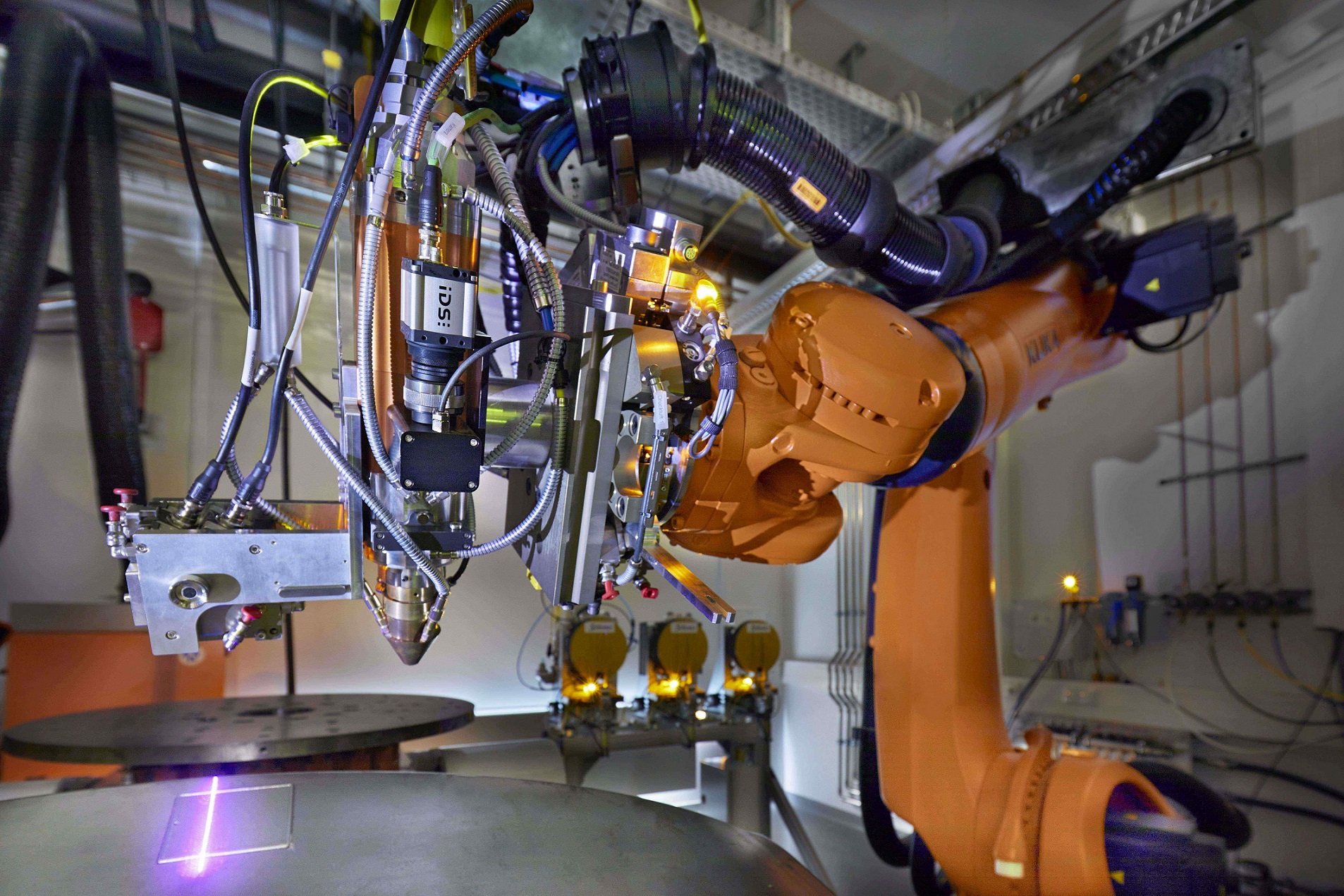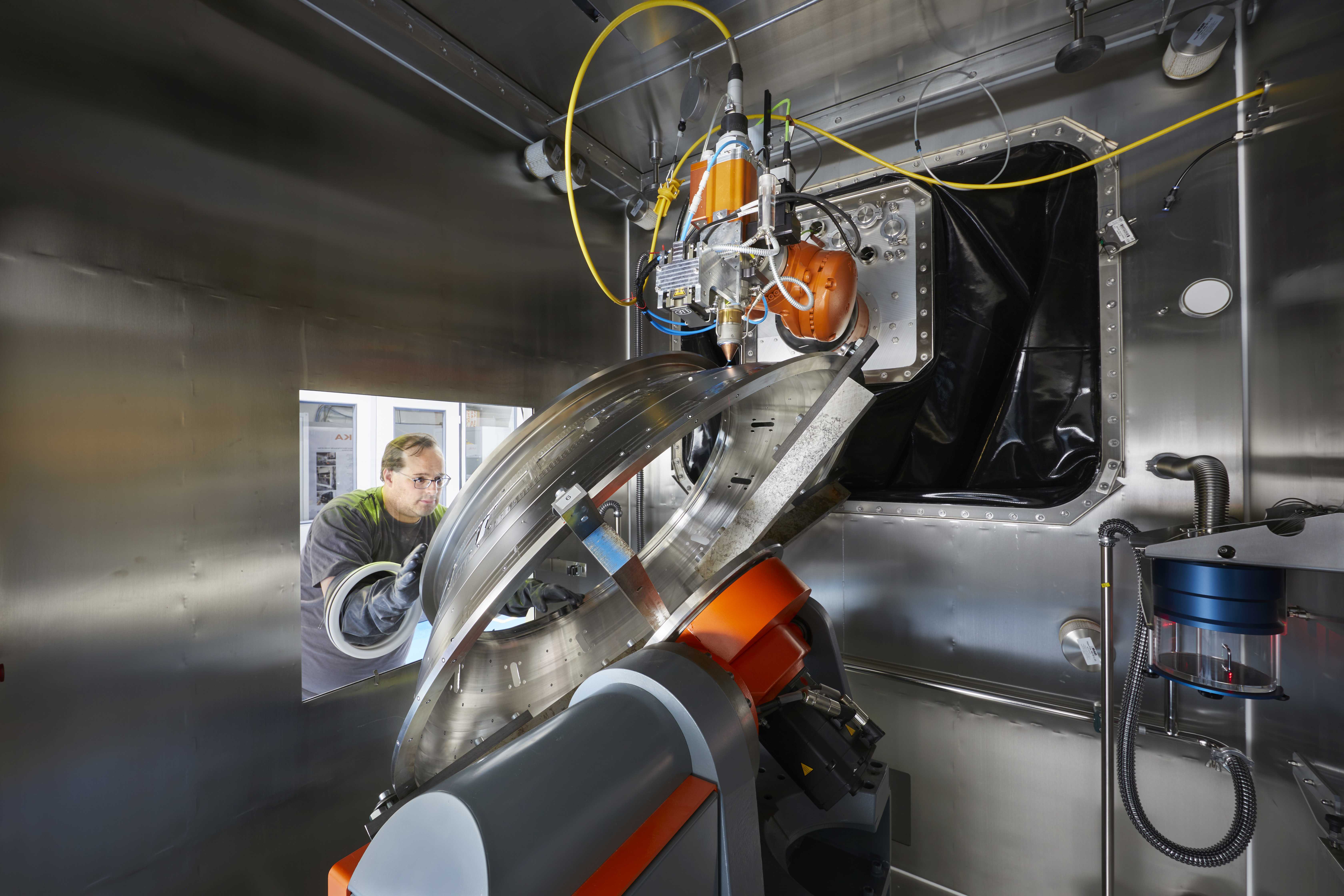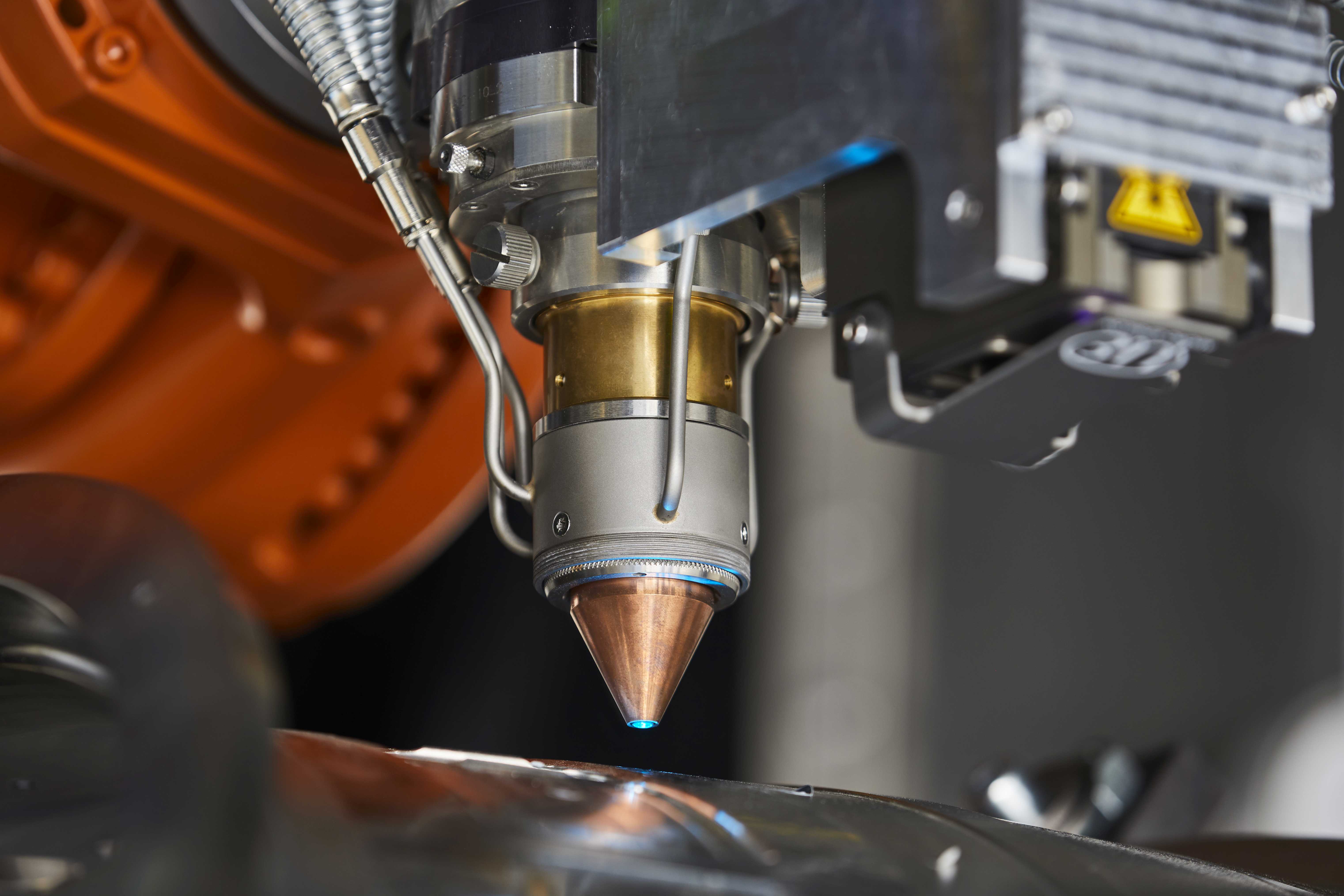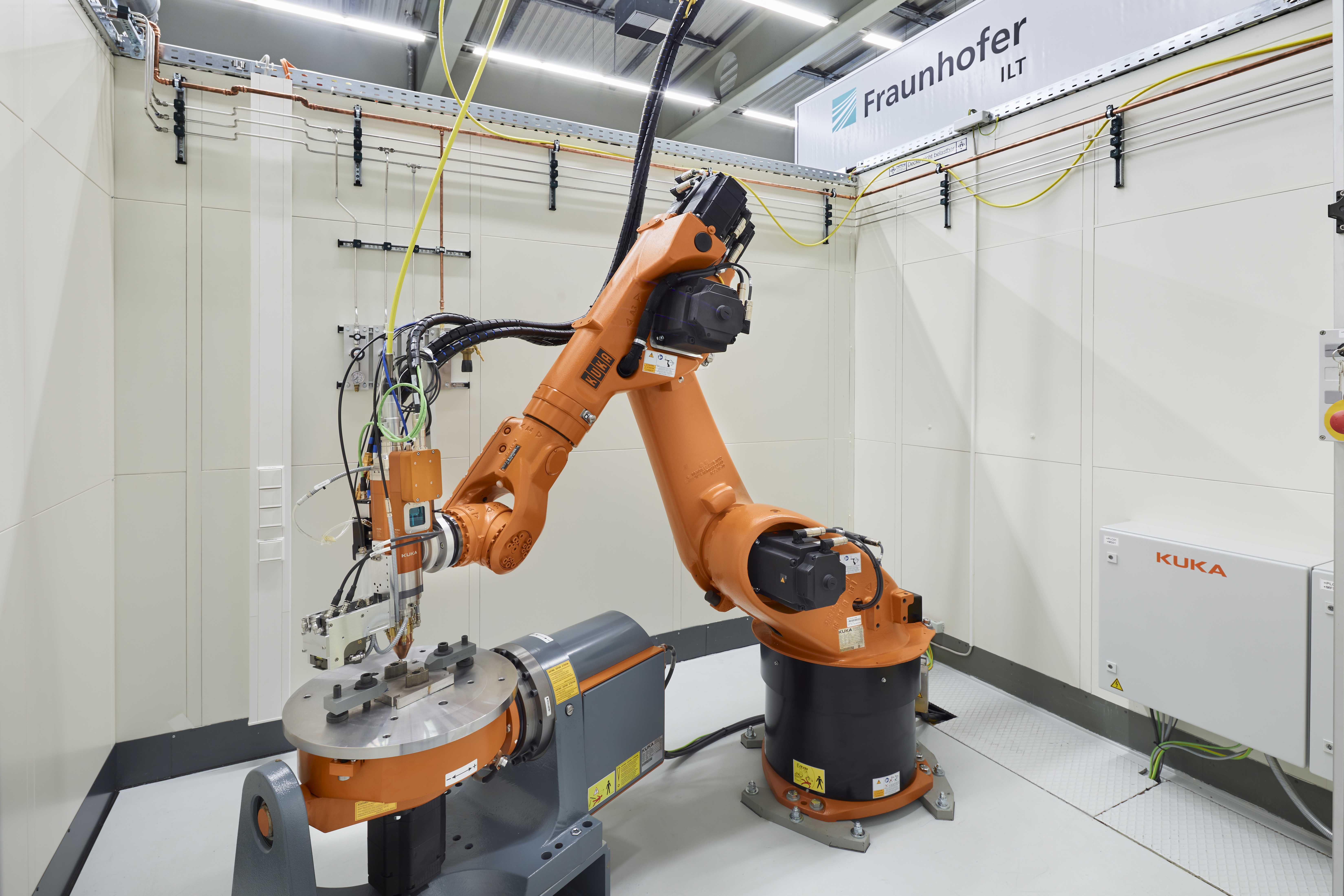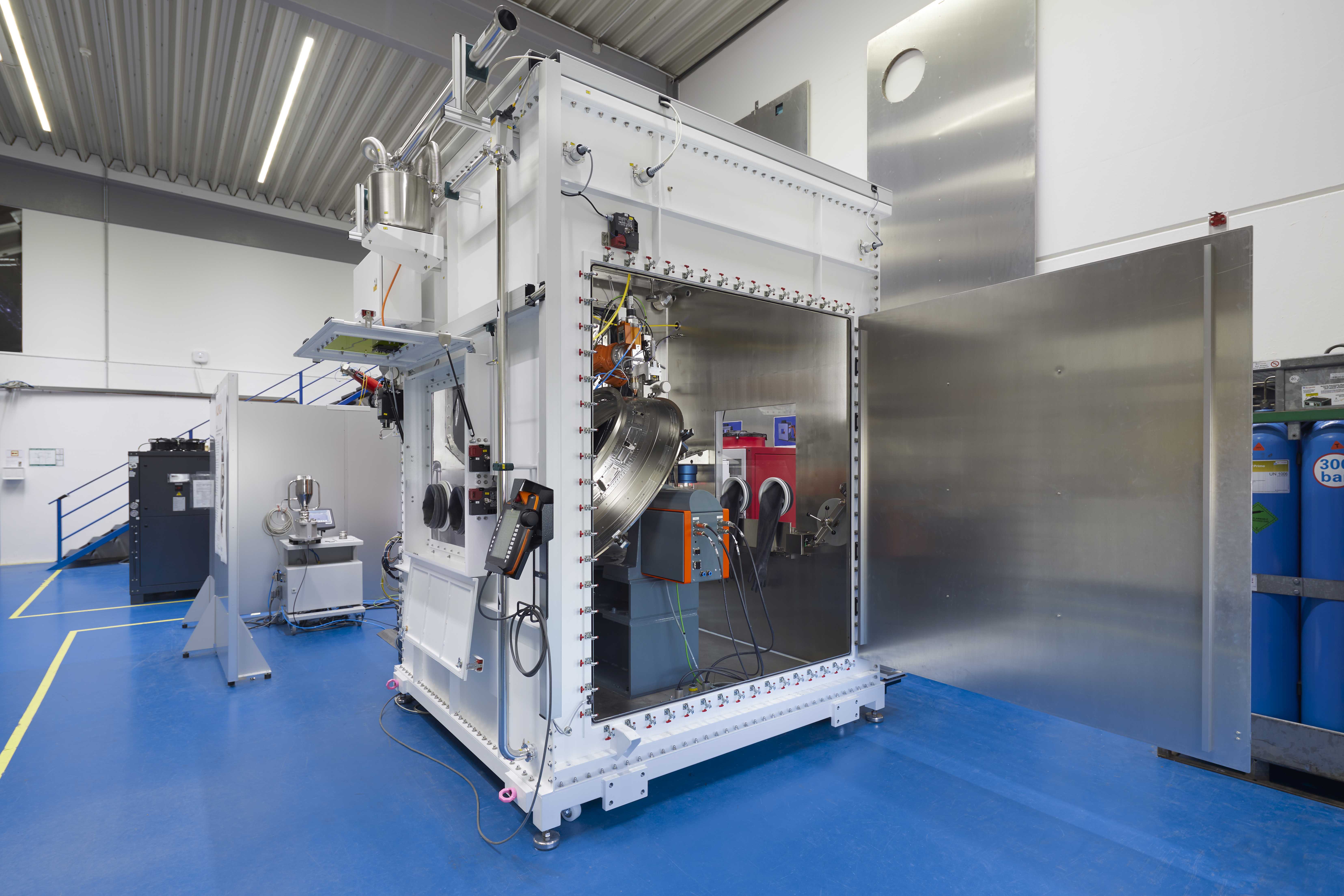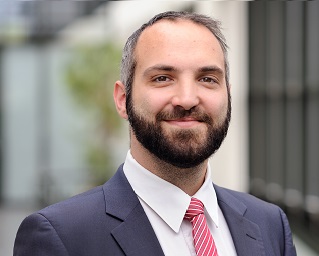A proverb says that "too many cooks spoil the broth". Now, with eight partners, a great many chefs were involved here. What was the recipe for success?
Neumann: We all already had a lot of experience in working together in large research projects. It was a good fit that all the partners had the same professional attitude and that they all had equal rights.
Dr. Bossy: We see collaborative industrial research more as an orchestra, one in which all the instruments and players are filled correctly and one that coordinates them well. Transferred to ProLMD, this means that the right composition of the consortium and a coherent research plan make the project a success. What provided the consortium with the right mix for its forward-looking project work was having Fraunhofer ILT as a research partner, various companies along the value-added chain from automation, laser and measurement technology, and users from the automotive, aerospace and aeronautics sectors. KUKA Industries from Würselen, as project coordinator and later system provider, played a major role in the targeted research work.
Dipl.-Ing. Stefan Scherr is the project representative and responsible for the subject area “Additive Manufacturing - ProMat_3D” at the Project Management Agency Karlsruhe (PTKA), Production, Services and Work at the Karlsruhe Institute of Technology (KIT), Eggenstein-Leopoldshafen.
Mr. Scherr, how do you see it as project supervisor?
Scherr: The cooperation was very good. The project was supported by very experienced, innovative companies and research participants along the value-added chain.
What should one pay attention to in this form of technical teamwork?
Neumann: The chemistry between the people must be right. And I believe that this would have quickly become apparent if someone “didn't play along.” I think this is a very important aspect of a research project.
When you look back, what surprised you most?
Neumann: We collaborated very well together; each could rely on the technological project results of the other. We now have something to show for it, which has not just remained theory. We have also built up an additional solution at Fraunhofer ILT, which is also an interesting alternative for medium-sized companies.
After this project, how do you see Germany's chance to maintain or even expand its leading position in the field of metallic 3D printing?
Prof. Schleifenbaum: I believe that we are indeed doing well in Germany, but we are also facing massive competition. With projects like ProLMD, we can always give our competition individual pinpricks that are very well placed and also very painful for them.
Dr. Bossy: We have a good research landscape and project funding. Now it‘s a matter of sticking with it.
Scherr: It is important to maintain our leading position. For example, as a positive development, I see the material deposition of difficult-to-process materials such as special types of steel, nickel-based alloys or titanium. The companies are now getting more and more sure-footed and can bring their respective product and production portfolios closer to additive technologies on a broad scale. And there was a good start not only with the ProLMD project, but also with the other twelve projects in the ProMat_3D topic area.
Professor Schleifenbaum, did the spirit of Aachen also play a role in the success of the project?
Prof. Schleifenbaum: I like to direct my gaze away from Fraunhofer ILT and towards RWTH Aachen University, which is celebrating its 150th anniversary this year under the motto “Learning. Researching. Making.” There is a lot in this very striking slogan: We are all networked here and have already well understood that we are only strong together and that this networking is one of our essential points. And if you combine that with an attitude of making things happen, you have a good springboard. You still have to jump obviously, but it is a good springboard.
What role does the campus play in this; does the spirit of Stanford and Silicon Valley resonate here?
Prof. Schleifenbaum: We make similar things possible here by offering space, land and research infrastructure, thus attracting companies to us. On the campus alone, there are now more than 400 matriculated companies that develop, research and shape the future together with us. Together with our partners, we form a European “Engineering Valley.”
What are the next steps for Kuka? What would be the ideal result?
Neumann: I hope that we can use the findings to put together a package for customers in which the features are “ready to use.” That is actually still rare. Entrepreneurs can put a lot together, but it is still difficult for them to buy everything from one source. In close cooperation with institutes such a thing succeeds. And to implement this for the industry and use it here – that must be the goal!
So the companies are looking for general suppliers for additive manufacturing?
Neumann: That is true. In the ProLMD project we are now showing that all functions can be combined with a machine in such a way that they can be operated without any problems: The user only needs a basic knowledge of materials handling and technical requirements, especially in additive laser manufacturing. But everything must fit together. Our goal is, among other things, to offer an all-round carefree package, a standard cell for medium-sized companies.
Dr. Bossy, what is the next step?
Dr. Bossy: The BMBF also wants to support projects to introduce methods of artificial intelligence into production and disseminate them further. We are currently analyzing and evaluating the drafts received for this. We also invited the additive manufacturing community to submit proposals. I see artificial intelligence as a good approach to making planning and production processes more stable and controllable.
The interview was conducted by Nikolaus Fecht on behalf of Fraunhofer ILT.
 Fraunhofer Institute for Laser Technology ILT
Fraunhofer Institute for Laser Technology ILT